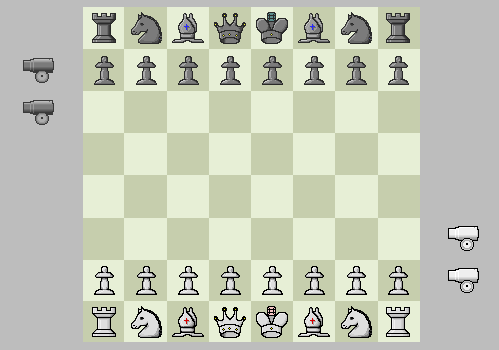

In Swedish Cannon Chess the rules are the same as in orthodox chess, except that one or two Swedish Cannons per player are placed in the reserve. After having jumped any piece, the Swedish cannon can slide and capture like a rook. However, if no jump move exists it's allowable to slide like a rook, but without capturing. The Swedish Cannon has about the same value as a bishop (preliminary estimate).
Players may either move a piece or pawn, or drop a Cannon from the reserve. Cannons may only be dropped on a friendly pawn on the second rank. The removed friendly pawn must immediately be relocated two squares ahead of the dropped piece. This position, and the position in between, must be empty. If not, the piece cannot be dropped on the friendly pawn. Should a player refrain from inserting his extra pieces at these occasions, then he has forfeited his chance of introducing them. Note that pieces and pawns are allowed to move before both Cannons have been dropped. Note also that you are allowed to make a pawn-relocation if in check, if the pawn-relocation covers the check. The relocated pawn can be captured by 'en passant'. A pawn can, additionally, promote to Cannon.
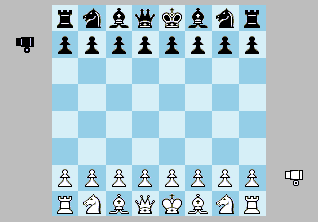 The variant with one Cannon per player is the more conservative. It introduces into the game many new complexities, while remaining true to the fine-tuned strategical nuances of traditional chess. An upside-down rook can be used as Cannon.
The variant with one Cannon per player is the more conservative. It introduces into the game many new complexities, while remaining true to the fine-tuned strategical nuances of traditional chess. An upside-down rook can be used as Cannon.
The Swedish Cannon can take active part early in the game, so one ought to introduce it early. The Cannon can be exchanged for a light piece that has acquired a good position, or it can threaten an enemy rook on an half-open file. The Swedish Cannon is stronger than both its counterparts, the Korean Cannon and Chinese Cannon, making it easier to introduce it in a context of Western pieces. Its movement is similar to the Korean Cannon, but the Korean Cannon is stranded when no jump moves are available. This cannot befall the Swedish Cannon while it is then, and only then, allowed to slide like a rook, but without capture. Unlike the Korean Cannon, it can capture and jump other Cannons.
In this game the opening variance is very big. The knight retains its strength on this standard board. Fianchetto can be a good idea in that it gives better protection against the enemy Cannons. Interestingly, if the enemy Cannon has no jumps, then one can sometimes position a piece so as to provide a jumping option, thus preventing the Cannon from using his right to move like a rook. The closest relative of the Swedish Cannon is the Korean Cannon. Swedish Cannon Chess, and the Swedish Cannon, were invented and implemented by undersigned, April 2007.
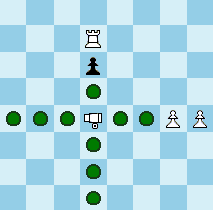 When the Swedish Cannon cannot jump it may slide like a rook, but without capture.
When the Swedish Cannon cannot jump it may slide like a rook, but without capture.
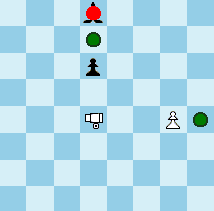 As long as there are jump moves, the Swedish Cannon functions like a Korean Cannon, it both slides and captures after the jump.
As long as there are jump moves, the Swedish Cannon functions like a Korean Cannon, it both slides and captures after the jump.
Examples
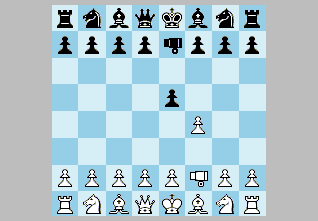 White has, perhaps unwisely, developed his Cannon to f2, relocating the pawn to f4, and black has responded similarly on the e-file. Should white now play 2.fxe5 then 2...Ce4 mate!
White has, perhaps unwisely, developed his Cannon to f2, relocating the pawn to f4, and black has responded similarly on the e-file. Should white now play 2.fxe5 then 2...Ce4 mate!
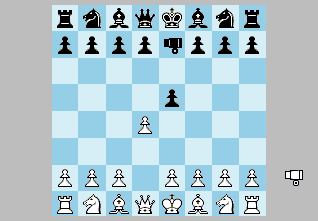 Black has reacted in a similar fashion as in the previous diagram. But here white can safely play 2.dxe5 Ce4+ 3.Be3 and white is better.
Black has reacted in a similar fashion as in the previous diagram. But here white can safely play 2.dxe5 Ce4+ 3.Be3 and white is better.
• You can download my free Swedish Cannon Chess program here (updated 2007-04-18), but you must own the software Zillions of Games to be able to run it (I recommend the download version).
• Don't miss my other chess variants.
© M. Winther, 2007 April